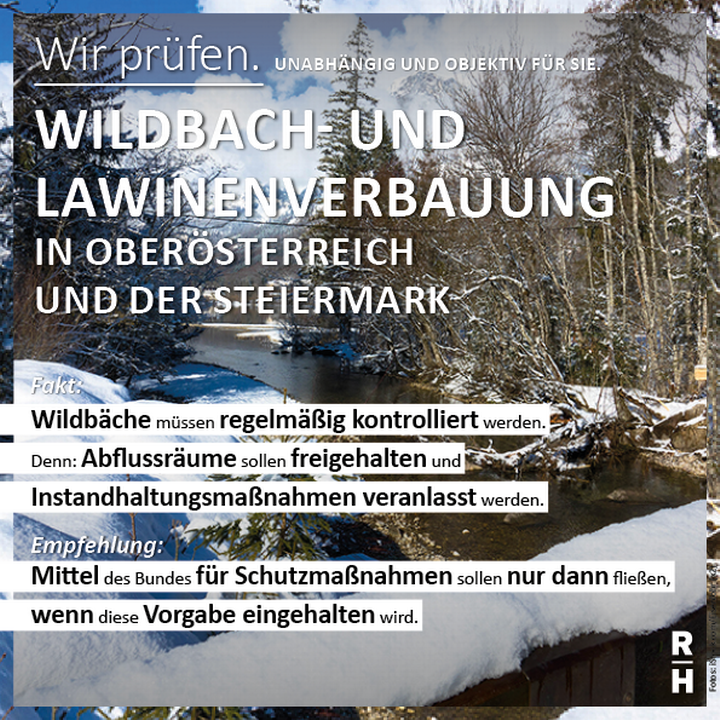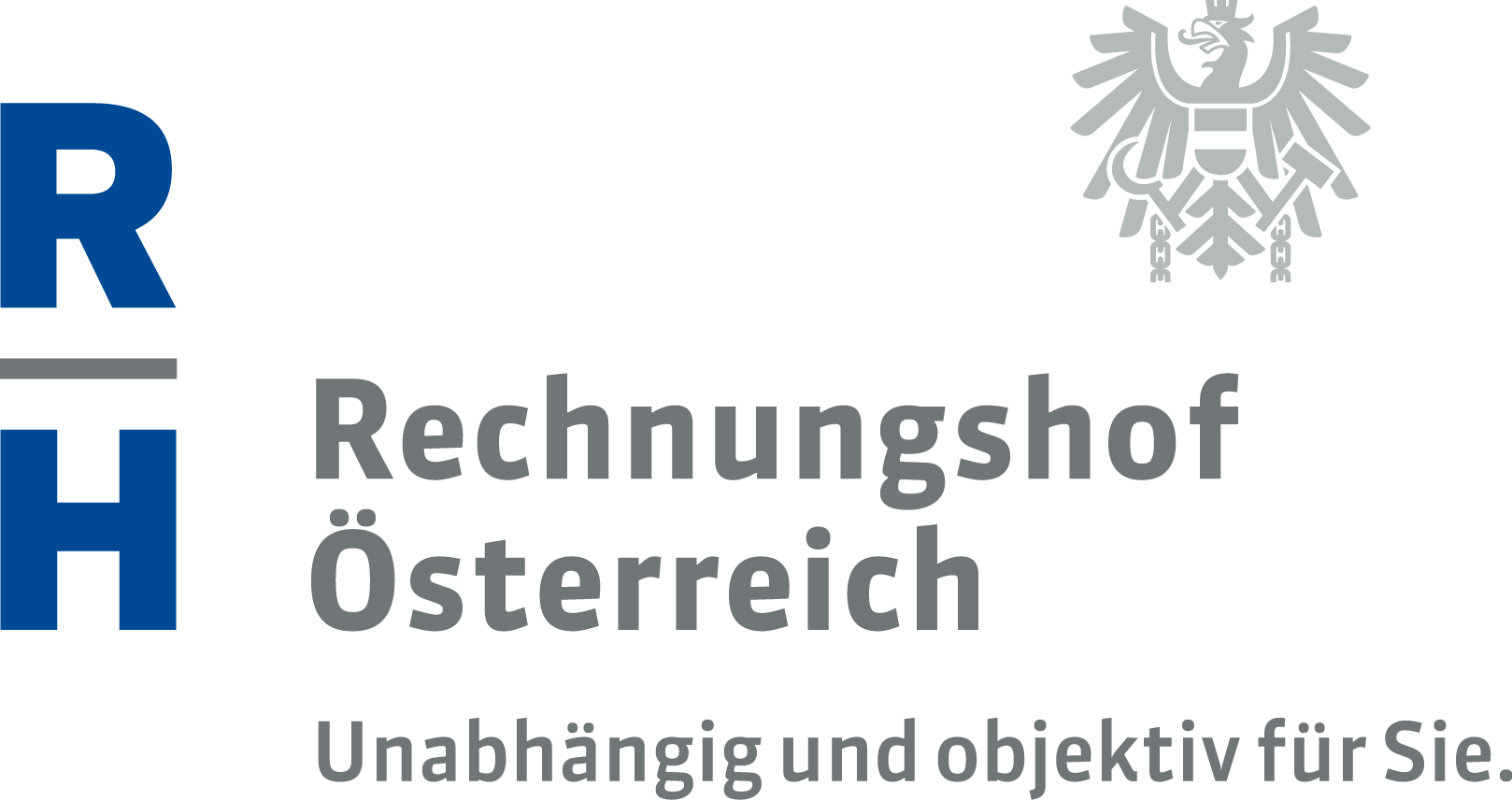Protection against natural hazards: torrents must be monitored on a regular basis

In its report published today on "Torrent and Avalanche Control in Upper Austria and Styria" the Austrian Court of Audit (ACA) points to the need for improvement as regards the protection from natural hazards. The hazard zone plans, for example, will have to be adapted and the federal government’s scope of responsibility for protection against natural hazards such as avalanches, mudflows, landslides and rockfalls should be clearly regulated. The audit was carried out at the Federal Ministry of Agriculture and its subordinate agency, the Torrent and Avalanche Control. The audited period spanned the years from 2015 to 2020.
Pursuant to the Austrian Forest Act 1975, the municipalities are required to inspect their torrents and tributaries at least once a year. Wood or other objects that obstruct the watercourse must be removed. Despite this provision, not all municipalities in the districts “Upper Austria West” and “Styria North” complied with this obligation and the required reporting to the forestry authority. However, a regular inspection of torrents would be essential in order to keep drainage areas free and to be able to initiate maintenance measures in time. The ACA recommends to tie the financing of protective measures from federal funds to the demonstrable performance of the tasks stipulated in the Forest Act 1975 by the municipalities. Furthermore, legal provisions should be examined that would allow for a prioritization and staggering of torrent inspections.
Hazard zone plans: contradictory information
The hazard zone plans are made available on several platforms, namely: naturgefahren.at, HORA, INSPIRE.Portal Austria, the geographic information system (GIS) services of the offices of the provincial governments and the community portal of the torrent and avalanche control authority. On the platforms, the accessible hazard zones differ in terms of content and scale. A sample comparison between the websites of the federal government – naturgefahren.at and HORA – and the GIS site of the Province of Styria showed a different allocation of the hazard zones in one example.
The ACA recommends to question the usefulness of the existing information platforms for retrieving data on hazard zones and natural hazards and to, at least, correct contradictory information. Only since 30 March 2021 has it been envisaged to depict – on a voluntary basis – those areas in the hazard zone plans that are endangered by floods, mudflows or avalanches with a recurrence interval of 300 years. Not least because of the increasing extreme weather events, the ACA is in favour of a mandatory depiction of these areas. Furthermore, this measure could contribute to increasing the risk awareness of the population.
Protection from gravitational natural hazards
The ACA also sees a need for further improvement in the legal framework regarding protection against natural hazards. While torrent control and forestry have constitutional status, the federal government’s responsibility for the so-called gravitational natural hazards of avalanche, mudflow, landslide and rockfall have not been anchored in the Federal Constitutional Law. The ACA recommends to prepare a draft for a constitutional amendment to clearly anchor the federal government's responsibility for protection against gravitational natural hazards.
In end-2021, the Austrian Torrent Control Act 1884 (Wildbachverbauungsgesetz 1884), one of the legal bases for the supervision of torrent and avalanche control, expired. Since then, the statutory supervisory activities have only included the monitoring of the forestry-related and biological measures carried out, but not the construction measures. As the Federal Ministry of Agriculture failed to provide adequate information, the ACA was not able to assess whether the ministry had taken timely and appropriate measures to clearly regulate the supervisory activities of the torrent and avalanche control by law.
Furthermore, an adequate constitutional basis should be elaborated and advanced to provide the federal government with the general competence for spatial planning in order to provide torrent and avalanche control services under similar framework conditions.
Buildings in hazard zones
The Federal Ministry of Agriculture approved a torrent control project in the province of Styria even though, according to the economic feasibility study, the benefits did not outweigh the costs. Alternatives, such as relocations to protect the people affected, were not assessed. As a matter of principle, projects should only be approved if they are considered to be economically viable. Any deviation from such an approach should only be made in exceptional cases and on the condition that relocations were also examined for their economic viability. In general, the ACA recommends more stringent requirements for buildings in danger zones.
- pdf Datei:
- 6,669.4 KB
- Umfang:
- 152 Seiten
Report: Torrent and Avalanche Control in Upper Austria and Styria (in German)
The ACA audited the torrent and avalanche control at the specialist department for torrent and avalanche control and protection forest policy at the Federal Ministry of Agriculture, Regions and Tourism as well as the subordinate divisions for Upper Austria and Styria and the regional district headquarters “Upper Austria West” and “Styria North”.
The audit aimed at presenting the legal bases and at assessing the organization, the staff and administrative expenditure as well as the key service areas of investment management, natural hazard information, hazard zone planning, expert consultations, action planning and implementation. The audited period spanned the years from 2015 through 2020.


